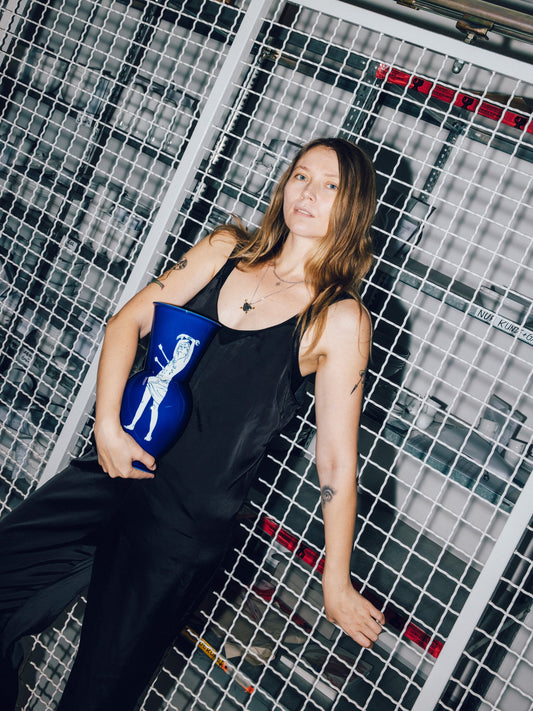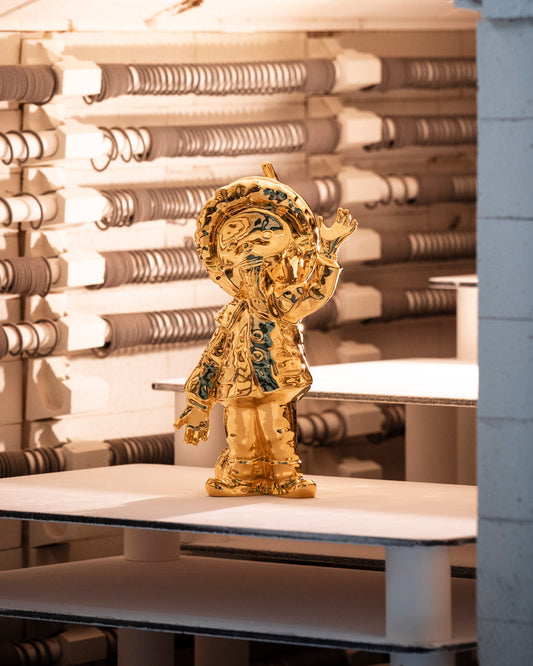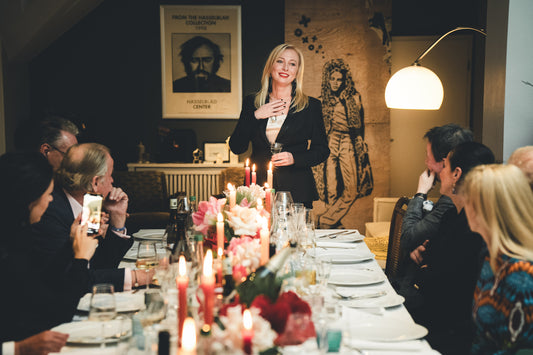IF YOU PLEASE, LUISE AND FRIEDERIKE. TWO PRINCESSES AND THEIR STORY
It is a puzzle of a special kind: 88 individual pieces are meticulously put together by hand over three days. Even for our most experienced employees, the Prinzessinnengruppe is an unusual challenge. We reveal the story behind this extraordinary porcelain figurine.
Image: @tanjademmerath
Two sisters, arm in arm and in flowing robes - a symbol of grace, gracefulness and beauty. Even 224 years after its creation, the sculpture has lost none of its perfection. Yet not all owners were so enthusiastic. For several years, the two princesses led a shadowy existence in a dark corner of the Berlin Palace and were almost forgotten...
But first things first! On December 24, 1793, the Crown Prince and later King of Prussia Frederick Wilhelm and Princess Luise of Mecklenburg-Strelitz were married in the Berlin City Palace. Two days later, the younger siblings of the crown prince and princess, Prince Louis and Princess Friederike, were married in the same place. For the brothers' father, King Frederick William II., this was reason enough to have the sisters, who were already revered as beautiful during their lifetime, immortalized. He initially commissioned the sculptor Johann Gottfried Schadow to create two portrait busts, which led to the subsequent commission for a life-size double statue of the princesses in plaster, which was presented at an exhibition at the Academy of Fine Arts in 1795. The arrangement of the two sisters was not only an artistic decision, but also indicates the different positions of Luise and Friederike: according to the rules of heraldry, the older and higher-ranking Luise stands on the left, while Friederike is also placed slightly behind her later queen.
Masterpiece or scandal?
The Prinzessinnengruppe was such a great success that a version in Carrara marble followed. Schadow handed this commission over to the court sculptor, who completed the work in 1797 - again in time for the annual Academy exhibition. And again, the public was delighted. So why did the statue disappear from public view for the next 90 years?
The client died shortly after the exhibition. Luise's husband, now King Frederick William III, was a sober and frugal man who wanted to distance himself from his father's opulent regime. He was evidently rather averse to the sensual portrayal of his bride. It was precisely what the public appreciated so much that he disliked: the natural depiction far removed from any regal pose and the fact that the pleated robes revealed the young women's body shapes. The fact that the younger sister Friederike, who was known to be revealing, had a reputation as the "most gallant lioness of the century" probably didn't help either. So he initially banished the work to a less prestigious guest room before it disappeared from public view altogether. The Prinzessinnengruppe only became accessible to the general public again in 1906 at the National Gallery's exhibition of the century. After two world wars and several changes of location, the marble original is now back in the Alte Nationalgalerie, while the plaster version is in the Friedrichswerder Church, which has been rededicated as the Schinkel Museum.
What does all this have to do with porcelain?
Work on the porcelain figure began at the same time as the marble group. In 1796, the modeller Carl Heinrich Schwarzkopf was commissioned to recreate Schadow's model. However, he was only provided with the two portrait busts and the result was not successful in Schadow's eyes. He therefore entrusted the task to Carl Frederick Hagemann, whom he described as his most skilled pupil - and who delivered a satisfactory miniature on December 21, at that time still entitled "The Crown Princess and Princess Ludwig".
Today, the 55 cm high Prinzessinnengruppe is made from the finest biscuit porcelain porcelain. The individual pieces are fired twice at temperatures of up to 1400°C and then not glazed. This gives the surface a matt character reminiscent of marble. And then "only" the puzzle remains to be done...


